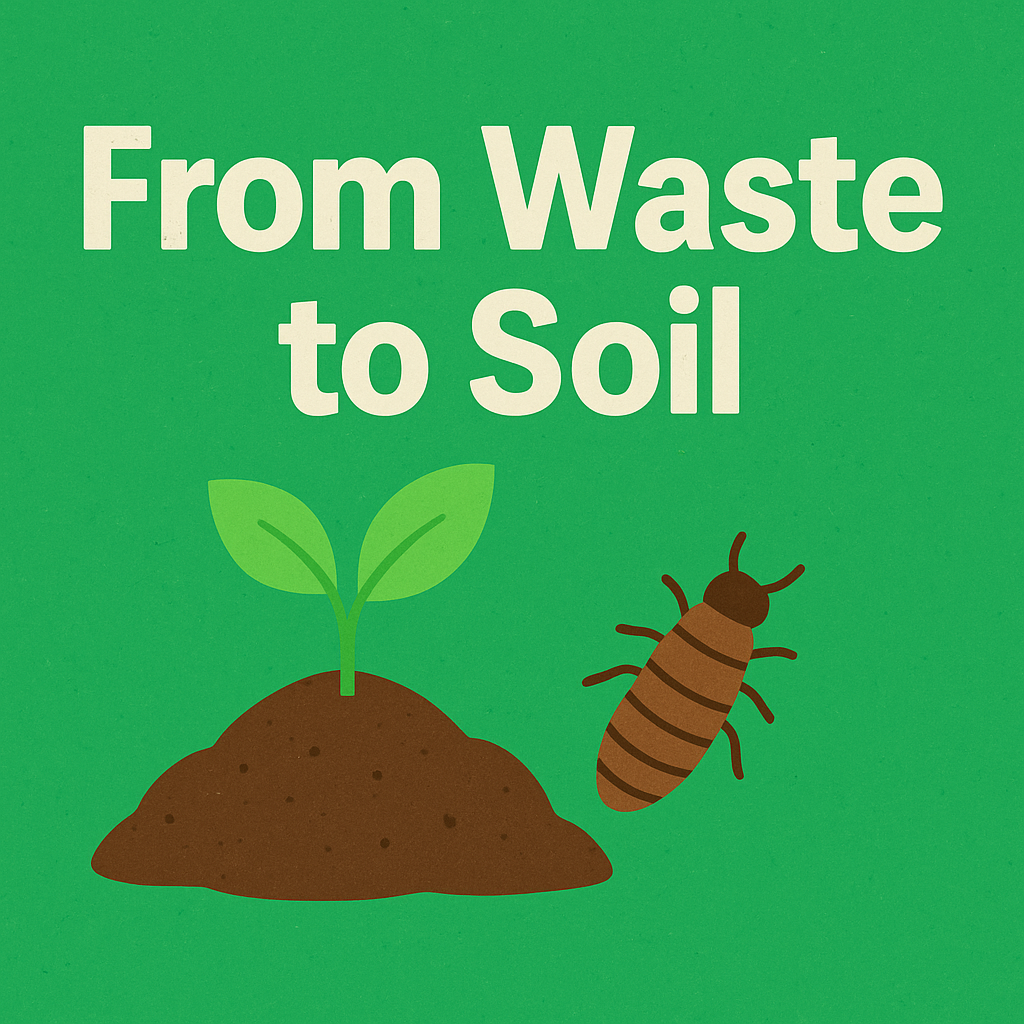We are happy to share a research paper from the NESTLER project. The title is “Microbial Composition and Bioremediation in Frass Fertilizers from Insect-Based Agri-Food Waste Valorization”. It looks at how frass can be used as a safe organic fertilizer to help soil and crops grow better.
This paper came out in the Journal of Environmental Management. It checks frass from eight types of edible bugs, like black soldier fly (Hermetia illucens), crickets (Gryllus bimaculatus and Scapsipedus icipe), silk moth (Bombyx mori), mealworm (Tenebrio molitor), desert locust (Schistocerca gregaria), African fruit beetle (Pachnoda sinuata), and rhinoceros beetle (Oryctes rhinoceros). Main results:
- Safety Check: No Salmonella bacteria in any frass. Other germs (like E. coli, enterococci) and heavy metals (like As, Cd, Cr, Cu) were at safe levels for organic fertilizers.
- Germ Types: Bacteria were mostly Firmicutes (43%), Proteobacteria (23%), and Actinobacteriota (18%). Fungi were mainly Ascomycota (80%) and Basidiomycota (10%). The most varied germs were in frass from O. rhinoceros and P. sinuata.
- Useful Roles: Fungi help break down waste, recycle nutrients, and fight bad germs. Bacteria make antibiotics, plant growth helpers, fix nitrogen, and more—especially in frass from P. sinuata, S. gregaria, and H. illucens.
- Bug Differences: 79–86% of germ changes came from the bug type. This shows different bugs can make frass for specific clean-up and farm uses.
This work shows how using bugs to process food waste makes clean fertilizers. It helps with better farming, fixing soil, and food supply. It fits NESTLER’s aim to use nature for sustainable solutions.
Read the full free article and other NESTLER publications here.

